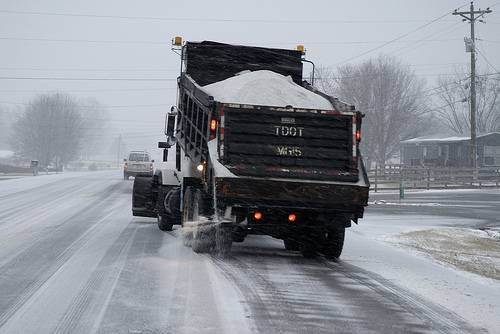
There are many different factors that can lead to water contamination. Everything from the runoff from storms to pharmaceuticals and even corrosion of water pipes can create contaminants that can get into your water supply. Most people are familiar with contamination such as lead but are unaware of other sources of water pollution. There are many sources of hidden contamination that people don’t consider to be a danger. One of these hidden sources of water contamination is road salt.
The presence of road salt in drinking water
Road salt has been used since the 1940s to clear icy or snow-packed roads, highways, and interstates, and it has proven to be a very effective way to clear roadways of snow and ice. However, one of the downsides of deicing with salt is that researchers are now discovering more salt in drinking water than was previously present. This increase in salt is alarming because it represents a real threat to your drinking water.
How can road salt affect drinking water?
Road salt is helpful during the winter, especially in the Northeast where drivers can be affected by adverse weather conditions. However, the environmental impact of using road salt is slowly becoming clear. As the snow and ice melt, it causes runoff that carries the road salt into nearby waterways. This means that the water that is treated and delivered into your home could contain higher than normal levels of chlorine. Homeowners that rely on well water or surface water for their primary source of drinking water need to be aware of the risks that salt poses to their water supply.
Impact of road salt on the environment
Although salt is naturally occurring, we are using it more and more as a natural deicer during the winter months, and it is these large amounts of salt that are creating a problem for the surrounding environment. Runoff water that contains salt can threaten plant and animal life, as large amounts of salt from roadways can disrupt the growing process of plants, damage delicate ecosystems, and settle in lakes and rivers where it can reduce the amount of oxygen in the water. Infrastructure is also not immune to the threat of salt. Salt can weaken structures such as bridges over time, creating the potential for a disaster.
Why additional salt in drinking water is a problem
In small doses, salt doesn’t pose much of a threat to humans. After all, we eat salt every day in our food. However, many people who are affected by conditions like hypertension could be put at risk by high levels of salt in the water supply. Increased levels of salt in drinking water can cause an unpleasant taste and odor for consumers. Well owners may find themselves having to do extra maintenance or even replacing their wells more often than normal. Consuming too much sodium over time can lead to cardiovascular problems, heart and kidney issues, and increased blood pressure, among other medical conditions. In addition to the health problems that are caused by direct consumption of high levels of salt in drinking water, it can also cause pipe erosion. As the salt water flows through pipes into your home, it can cause the pipes to deteriorate over time, flushing lead and other contaminants into your water supply.



